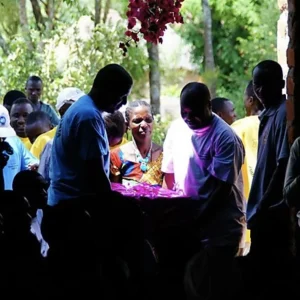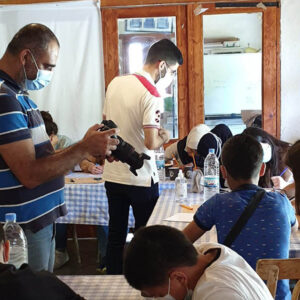 Is it really so important that the retelling of the story is exact, word for word? We believe it is! What if someone is telling this story to a group of traditional, oral learners? They may be accustomed to the recitations of the dervish, the griot or the sadhu, the chief-appointed poet or the storyteller in the market. Their texts are told and repeated in the same exact words each time. The assumption would therefore be that the Bible Storyteller is using the exact words of the Bible. What if this assumption is false and descriptions have been added, characters have been deleted, or the order of events has been changed? Using their “own words” to communicate the holy and sacred Scriptures not only devalues the Bible message but passes on a spoken Word that is not authentic.
Is it really so important that the retelling of the story is exact, word for word? We believe it is! What if someone is telling this story to a group of traditional, oral learners? They may be accustomed to the recitations of the dervish, the griot or the sadhu, the chief-appointed poet or the storyteller in the market. Their texts are told and repeated in the same exact words each time. The assumption would therefore be that the Bible Storyteller is using the exact words of the Bible. What if this assumption is false and descriptions have been added, characters have been deleted, or the order of events has been changed? Using their “own words” to communicate the holy and sacred Scriptures not only devalues the Bible message but passes on a spoken Word that is not authentic.
If Biblical accuracy should not be compromised, the implication for Bible storytellers is to not add, change or omit one word of the text. This has been one of the distinctive features of Scriptures in Use. We have not embraced story crafting which involves reworking the text in a shorter version, in a more natural version, or in a summary version. That strategy can be useful but within the scope of oral communication of the Scriptures it presents inherent challenges.
ENSURING ACCURACY
- Exact Retellings… Very early on, after some experimenting, we did not encourage telling Bible stories using our own words. We had occasionally listened aghast to certain texts embellished to the point of changing the original meaning. We understood the dangers of someone’s own words being repeated with even further embellishments. Is word- for- word memorization and retelling difficult? It can be, especially for those of us in the West, yet in many traditional societies it is as not challenging at all.
- Introductions and Dialogue… We discovered also that introduction in our own words before the story and dialogue after the story were very helpful to standardizing the biblical text. The Bible passage is told verbatim as it appears in the preferred scripture translation of the group. However, practitioners are taught to create introductions and dialogue questions in their own words. A clear delineation after the introduction indicates the Bible story is about to begin. The introduction gives background information, creates interest in hearing the story, or links the new story to a previous story. When the Bible story ends it is made clear the story is over, followed by dialogue that facilitates discovery of meaning without explanations. Dialogue also helps develop rapport between listener and storyteller/church planter and provides a measure for spiritual understanding.
- Role of Mentor… In the opening illustration to this article, Asha was a mentor to Anju. Asha was literate, but Anju was not. Asha read or repeated the story from memory over and over for Anju until she had correctly memorized the story. Print is the mentor’s aide to memorization and the accuracy check. A literate mentor transmits the text to a non-reader who memorizes it. Learning occurs as it always has among oral societies as the story is repeated over and over again by the elders for the younger generations.
STORYTELLING AND BIBLICAL ACCURACY
We strongly believe in the importance of exact, word for word retelling of Bible Scripture stories and teach this in our Scriptures In Use trainings, encouraging engagement with God and His word through the Oral Arts: Storytelling, Drama, Dance, Music, Song and Poetry.










